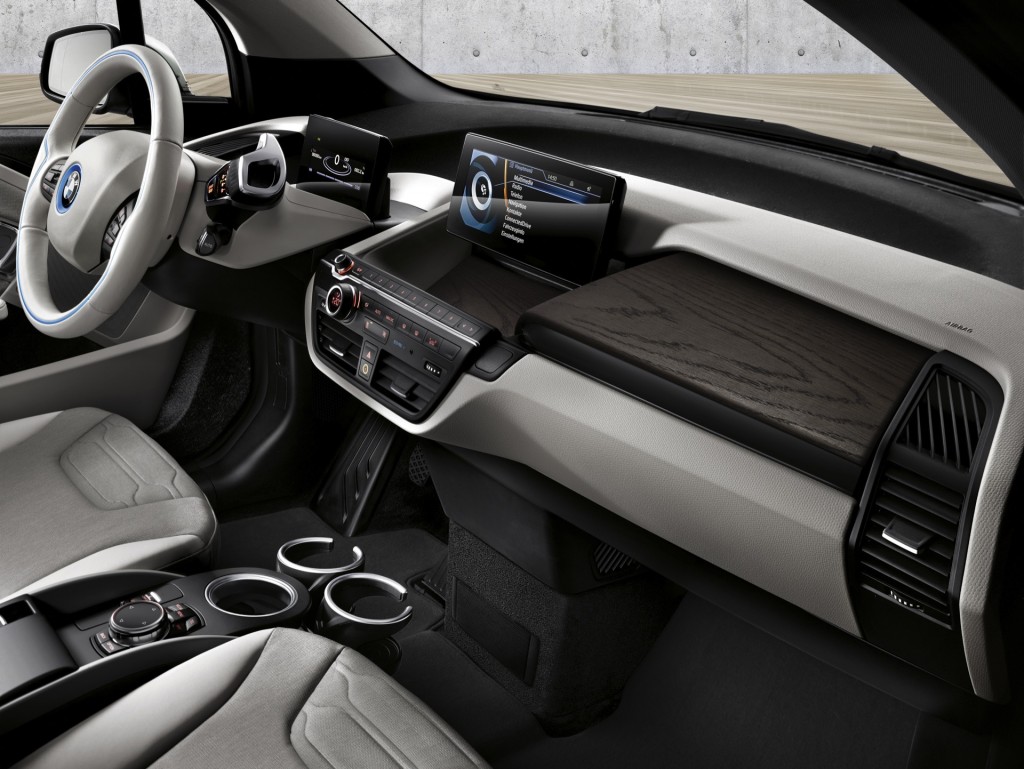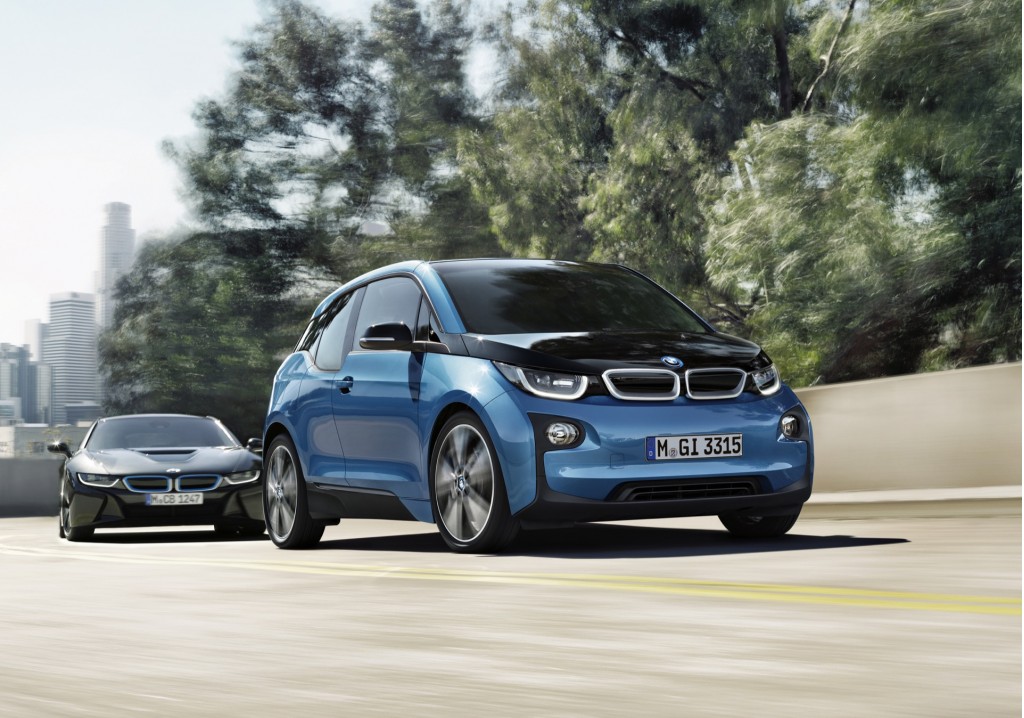The 2017 BMW i3 represents the first significant update of BMW's electric car since it went on sale in the U.S. back in May 2014.
This mid-cycle refresh includes several updates, most notably a much larger battery pack and a corresponding increase in its EPA-rated range.
Battery capacity rises 50 percent, from 22 to 33 kilowatt hours, and BMW says the rated range for the all-electric version will be up to 114 miles combined.
DON'T MISS: 2017 BMW i3: up to 114 miles of range from 50-percent battery increase
Alongside this version, BMW will continue to offer a range-extended i3 REx model, with a 0.65-liter two-cylinder gasoline engine that acts as a generator.
The REx will also get the 33-kWh battery pack, and owners will be able to fill its gas tank to the full capacity for 2.4 gallons.
This is already the case Europe, but previous U.S.-spec i3 REx models had their gas-tank capacity electronically limited to 1.9 gallons.

2017 BMW i3
The i3 REx will have an electric range of 97 miles, plus an 83-mile range on gasoline, for a total range of 180 miles.
Efficiency ratings for the i3 REx are 35 mpg combined on gasoline and 111 MPGe combined on electric power, while the all-electric i3 is rated at 118 MPGe combined.
The new battery pack fits within the same package as the old one, but uses new 94 Amp-hour lithium-ion cells with higher energy density than the previous 60-Ah cells for increased capacity.
ALSO SEE: 2017 BMW i3 electric car: longer-range battery, but current 81-mile model to stay
Alongside models with the new pack, BMW may continue to offer the old 22-kWh pack in base models.
These models will have the same EPA-rated 81-mile range and 124-MPGe combined efficiency rating as the 2016 i3.
The 2017 i3's output of 125 kilowatts (170 horsepower) and 184 pound-feet of torque from the rear-mounted motor is unchanged, as is the 38-hp rating of the range extender.

2017 BMW i3
As before, 0 to 60 mph should take just over 7 seconds for the all-electric version, and just over 8 seconds for the range extended version.
The battery-electric version weighs 2,961 pounds, while the i3 REx weighs, 3,234 pounds—both slight increases over previous model years.
The 2017 i3 uses a 7.4-kilowatt onboard charger, meaning the larger battery can be fully recharged at a 240-volt Level 2 charging station in 4.5 hours or less—up from 3.5 hours for the smaller battery.
CHECK OUT: BMW electric-car batteries to be used as home energy-storage devices
DC fast-charging capability remains at 50 kW, with a Combined Charging Standard (CCS) connector.
This allows an 80-percent recharge in about 40 minutes.
Other changes for 2017 include the addition of a Protonic Blue metallic paint option, previously offered only on the i8 plug-in hybrid.

2017 BMW i3
U.S. models also get an electric moonroof, an option many customers have been longing for.
Deka World is now the standard trim level on the i3, while the Mega World, Giga World, and Tera World trim levels carry over from previous model years.
MORE: Are 100-mile BMW, Nissan, VW electric cars already a lost cause?
Advanced real-time live traffic data and an integrated universal garage-door opener are now standard on the i3.
BMW also plans to offer a new version of its BMW Home Charger Connect, with a more compact design and WiFi connectivity that allows owners to control and monitor charging remotely.

2017 BMW i3
Owners may soon be able to connect the home charging station to an energy storage system.
BMW unveiled such a system last month, using i3 battery packs, claims it will eventually be available to individual homeowners.
The 2017 i3 itself will likely go on sale later this summer or in the early fall.
Pricing will start at $44,595 for the 33-kWh, all-electric model, and $48,445 for the range-extended i3 REx (both prices include destination).
[UPDATE: We added range and efficiency information for the i3 REx model, which was not available when this article was originally published.]
_______________________________________________












